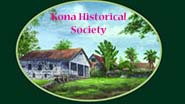
Waiakauhi pond
Since 2011 we have watched as David Chai and his crew have worked to restore the pond next to the Beach House. (Click here to read about how he rehabilitated the pond.) It is looking really healthy now. Here in his own words are how the pond has made it:
I appreciate the recognition of our team in finally accomplishing this. Amid the many expressed concerns regarding the “look” of the fishpond since the tsunami of 2011, I’ve always tried to explain that we faced 2 options. The first option was to use chemical control such as Copper, typically applied in freshwater Golf course lakes to kill and control algae. This would have an immediate affect, but at the same time it is toxic to most marine fish and invertebrates, and slightly toxic to water birds. It comes with added risk of eventually flushing into the ocean and harming our coral reef. In addition, this approach would require the use of algae killing chemicals and maintenance labor forever. The second option was to use nature to maintain a stable ecosystem, thus creating an environment that is self-sustaining with little or no inputs for long-term algae control. The drawback to this approach as many had noticed, is that the pond will look “bad” for at least a few years. This problem is compounded given its large size, the invasive algae species (Cladophora sp.) present, and the ideal algae growing conditions (i.e. shallow, warm, lots of light and nutrients). In determining our approach we also had to keep in mind that this is a historic fishpond, recognized by the State and Hawaiian Community as a traditional cultural property at the Resort. Our goal has always been to restore the pond as a working Hawaiian fishpond, in line with its traditional use and keeping with our values toward this place. We faced this same challenge when the pond was first restored in 1993 and took us 3 years to balance, but it was deeper and not filled with tsunami deposited sand like it is now. Well, to make a long story short, we achieved stability by adding beneficial organisms and manipulated salinity to nurture these organisms. The added components included things like probiotic bacteria/enzymes and other microorganisms, small algae eating crustaceans, snails and fish. In addition, it took a lot of hard physical labor from staff, especially Chris Keeling to make sure the pond didn’t get completely out of hand. Nature works on its own timetable, we just point it in the direction we want it to go and hope it gets there sooner or later. One interesting side note is that many in our community probably have a little Waiakauhi pond in them. Those tons and tons of algae biomass removed from the pond were a valuable resource for several organic farms on Hawaii island, used as rich organic seaweed compost to feed their fruits and vegetable. We’re all part of nature’s cycle, hopefully seeking balance.
Mahalo,
David
We all thank David and his remarkable team to continue to make Hualalai beautiful

Leave a Reply